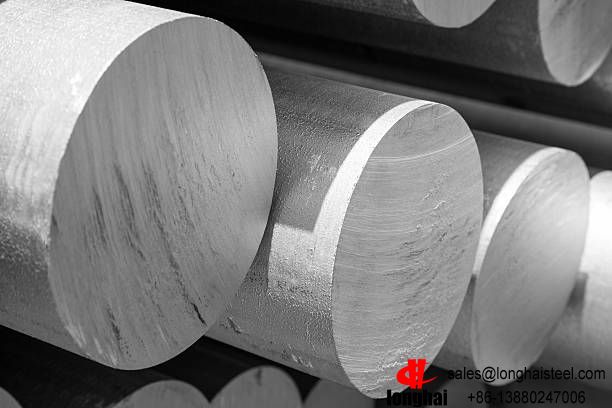What is Alloy 100 grade steel?
✔ Aircraft landing gear (F-35, Boeing 787)
✔ High-stress fasteners & engine components
✔ Armor plating & missile casings
Products Form:
Chemical Composition
| Grade | Chemical composition WT % |
|---|
| C | Si | Mn | P | S | Cr | Ni | Mo | W | V | Ti | B |
|
|
|
|
|
|
|
|
|
|
|
|
|
|
|
|
|
|
|
|
|
|
|
|
|
|
|
|
|
|
|
|
|
|
|
|
|
|
|
|
|
|
|
|
|
|
|
Mechanical Properties
Room Temperature Performance
| Property | Value | Test Standard |
|---|
| Tensile Strength | 1930-2070 MPa (280-300 ksi) | ASTM E8/E8M |
| Yield Strength | 1650-1790 MPa (240-260 ksi) | ASTM E8/E8M |
| Elongation | 10-14% | ASTM E8/E8M |
| Fracture Toughness (KIC) | 110-130 MPa√m | ASTM E399 |
| Hardness | 52-54 HRC | ASTM E18 |
Fatigue Performance (S-N Curve)
- Fatigue limit (10⁷ cycles, R=0.1): 700-750 MPa
- High-cycle fatigue (HCF): Dominated by microcrack initiation at inclusions
- Low-cycle fatigue (LCF): Controlled by plastic strain accumulation
Fatigue Crack Growth Rate (Paris Law Parameters)
| Stress Ratio (R) | C (mm/cycle) | m | ΔK Range (MPa√m) |
|---|
| R=0.1 | 1.2×10⁻¹¹ | 3.2 | 10-50 |
| R=0.5 | 3.5×10⁻¹¹ | 3.0 | 10-40 |
Fracture Toughness & CTOD Analysis
Crack Tip Opening Displacement (CTOD)
- Critical CTOD (δm): 0.15-0.25 mm (ASTM E1820)
- Threshold ΔKth: ~5 MPa√m (below which cracks do not propagate)
Fracture Modes
- Fatigue fracture: Striations + secondary cracks
- Overload fracture: Dimples + localized cleavage (hydrogen embrittlement risk)
Microstructure Analysis (SEM/TEM/EBSD)
Key Phases in AerMet 100
| Phase | Morphology | Size |
|---|
| Lath Martensite | High-dislocation-density bundles | 0.2-0.5 μm width |
| Reversed Austenite | Thin films between laths | 10-50 nm thickness |
| M2C Carbides | Spherical precipitates | 5-20 nm diameter |
Fractography (SEM Imaging)
- Crack initiation: Often at Al₂O₃ inclusions (≤10 μm)
- Stable crack growth: Fatigue striations (~1 μm/cycle spacing)
- Fast fracture: Mixed ductile (dimples) + brittle (cleavage)
6. Environmental Effects & Special Conditions
Hydrogen Embrittlement (SSRT Testing)
- Reduction in ductility: 14% → 6% elongation (after H-charging)
- Fracture mode shift: Ductile → intergranular cracking
Corrosion Fatigue (Salt Spray Testing)
- Fatigue life reduction: 30-40% in 3.5% NaCl vs. dry air
- Crack growth acceleration: 2-3× faster at ΔK >15 MPa√m
Physical Properties
- Solution Treatment: 885-925°C (oil quench)
- Aging: 455-495°C for 4-8 hours (air cool)
Heat Treatment
- Solution Treatment: 885-925°C (oil quench)
- Aging: 455-495°C for 4-8 hours (air cool)
Welding Properties
- Welding: Avoid conventional methods—EBW/LBW + PWHT required
Machining Properties
- Machining: Use carbide tools, low speeds, high feed rates

